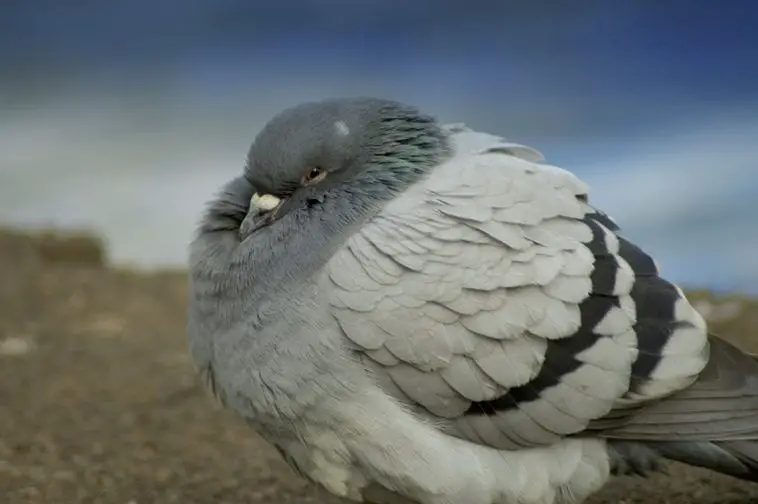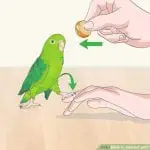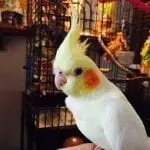Body languages for birds are very important since this is a way for them to communicate with other birds and other animals. There are a lot of body languages that a bird manifest and some of their body languages are often misjudged due to lack of knowledge. One of the most common body languages that a bird often does is fluffing their feathers or fur. There are a lot of things that fluffing of the bird’s feather connotes. In this article, we’ll learn more about the possible reason why a bird fluffs its feathers.
A way to maintain a successful relationship with your bird is to be able to know and understand their body language as well as their vocalizations. You would know how they feel if you are familiar with how they behave based on what they act or show to humans. You can easily detect their feelings of happiness, sadness, boredom, and frustration through the use of their bodily languages.
The bird’s feathers play an important part in the overall functioning of the birds. Feathers are not only used aesthetically, but you can easily detect what a bird feels through the way it uses its feathers. Fluffing of feathers is usually seen that birds do, but not all people are aware that there is a reason behind it. If you own a bird, you must be able to master each and every possible reason why they fluff their feathers because it could mean a serious thing. In this article, we’ll show you different possible reasons why your bird fluffs its feathers.
Possible Reasons Why Birds Fluffs Up
1. The bird is cold
When your bird fluffs up, it means that it is cold, that is why fluffing is a way for them to conserve the heat in their bodies. When the weather is cold, you’ll notice that they look fluffier so that they can trap more heat in their feathers. The fluffier the bird is, the colder it feels. In captivity, you may turn on the heater so that the bird is just relaxed.
The feathers are a good insulating material because it creates a thermal layer to block cold air. Fluffing of feathers is a defensive mechanism to protect themselves from extreme coldness.
2. The bird is sleepy
When your bird is ready to take a nap, it may be in the fluffing position to comfort themselves. Some bird species would stay sleeping in this position while some birds such as parrots would just fluff their feathers minutes before going to sleep but would eventually go back to the normal positioning of their feathers. When they sleep in this position, it is cold in their environment, and this is there a way to thermoregulate. Fluffing of feathers is also a way for the birds to tell that they are now ready to relax.
3. Your bird is upset
Bird’s puffing is another sign of upset, frustration, or stress. This behavior is usually accompanied by other behaviors such as noisiness and twisting of their tails. It is important to detect early signs of behavioral problems so that it won’t lead to other serious behavioral concerns such as feather plucking. Fluffing of feathers is also a sign that they want to hide their feelings.
4. The bird is not feeling well
When your bird fluffs, it would only be for about a couple of minutes to hours, but if you notice that they are just in this position for almost a day, there is a possibility that it is not feeling well. In this case, you need to take it immediately to the veterinarian for early diagnosis before their situation gets even worse. At times birds are very good at hiding their sickness; that is why you should be able to distinguish if they are really sick because there are moments that are detecting that they are ill if they are just in this position. Aside from fluffing their feathers the whole day, it is also accompanied by loss of appetite and changes in their poop to know if they are sick or not.
5. The bird is happy
Fluffing their feathers is also an indication that they are happy. They would usually be in this position when they see new faces in their cage playing with them, giving them the feeling that they are part of the flock. Fluffing of their feathers is a way to blow off the anxiety feeling that they are experiencing.
6. They are preening
Preening is a way for birds to clean their feathers. They usually fluff their feathers to preen those parts of their feathers that they can’t reach when their feathers are in the normal position. You know that they are preening if their head and beak are also busy doing something else. They fluff their feathers so that they can be precise in cleaning it.
7. The bird wants you to pet them
When your bird suddenly fluff its feathers while you and your bird is playing, it means that they just want you to pet them. You should be keen on understanding if they want you to pet them because, at times, fluffing their feathers means that they are already tired and just want to relax. It is their way of being sweet so that you’ll pet them.
8. They are trying to protect their bodies from the wind, sun, and moisture
In the wild where the climate is windy and sunny, a way for birds to cope is to fluff their feathers while they tuck their heads so that they won’t be irritated with the moisture from the wind. Their feathers are made from beta-keratin, making it a perfect shield against strong winds and damaging rays of the sun.
9. Their way of camouflaging
In the wild, fluffing their feathers is a way for them to camouflage. This is only applicable for those birds that have dark colors such as black, brown, and green, wherein they can easily blend with nature. For bright-colored birds, camouflaging by means of fluffing their feathers is not that effective because they can still be distinguished easily. Camouflaging is a way for birds to escape from their predators. They tuck their heads so as to give them the feeling of security.
10. They are threatened
It is a defensive mechanism that when a bird is threatened, it will fluff its feathers to look big to scare their predator. When this technique is not effective, it will raise its feathers, or if there is still time, it will just escape. In captivity, you will see them at the side part of their perch while fluffing their feathers if they feel threatened, especially if there is no place for them to hide.
Final Thoughts
Birds use their body parts to communicate with other birds and to humans as well. The messages that they relay through the use of their body parts are important messages that you need to be aware of. Birds have their unique body language, and as breeders, it is your responsibility to be familiar with what your body shows so that you can easily understand its behavior.


